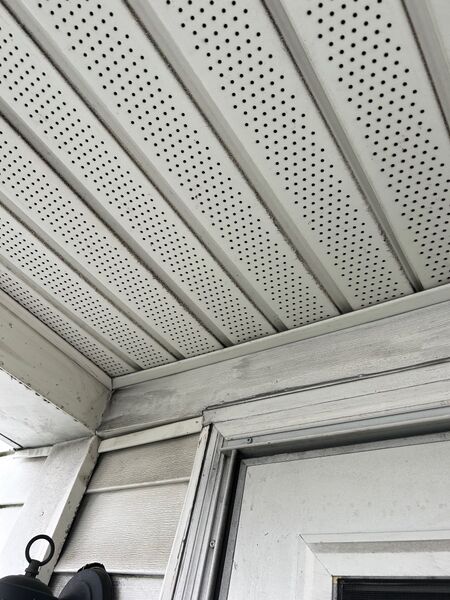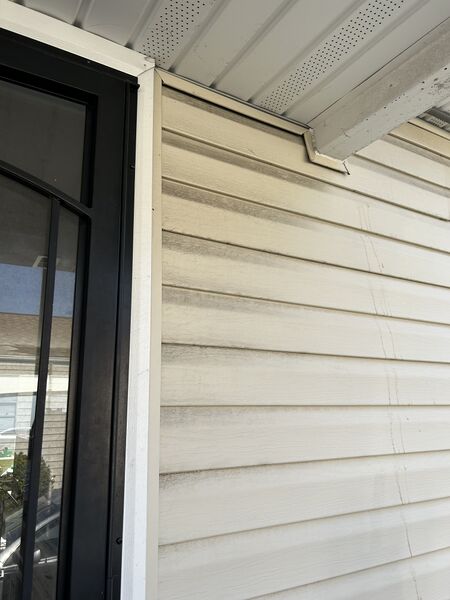Particulate matter and coal dust: Difference between revisions
removed regulations text |
|||
| (21 intermediate revisions by the same user not shown) | |||
| Line 1: | Line 1: | ||
== | == Airborne Particles == | ||
Airborne particles––also known as particulate matter (PM), particulates, or aerosols––refer to any mixture of solids and liquid droplets in the atmosphere. Particles can be directly emitted into the air or formed through chemical reactions of gaseous pollutants. | Airborne particles––also known as particulate matter (PM), particulates, or aerosols––refer to any mixture of solids and liquid droplets in the atmosphere. Particles can be directly emitted into the air or formed through chemical reactions of gaseous pollutants. | ||
Particles are often distinguished by their size. The terms PM<sub>1</sub>, PM<sub>2.5</sub>, and PM<sub>10</sub> are common ways particles are described, measured, and regulated, with the number in the subscript indicating the diameter particles in micrometers. Particles can also be | Particles are often distinguished by their size. The terms PM<sub>1</sub>, PM<sub>2.5</sub>, and PM<sub>10</sub> are common ways particles are described, measured, and regulated, with the number in the subscript indicating the diameter of the particles in micrometers. Particles can also be discussed in terms of very-fine (PM<sub>1</sub>), fine (PM<sub>2.5</sub>), and coarse (PM<sub>10</sub>) particles, with PM<sub>10</sub> often referred to as dust. Size affects how particles are [[Regulation under the Clean Air Act|regulated under the U.S. Clean Air Act]] and their [[Health impacts: particles and coal dust|health impacts]]. | ||
== | == Coal Dust == | ||
Coal dust is a type of particulate matter that contains coal. Coal dust is produced through physical processes that wear on the brittle coal rocks during mining, transport, and storage to generate small coal particles that are then uplifted to the atmosphere and carried by winds. As a result, coal dust particles tend to be larger in size, including PM<sub>2.5</sub> and PM<sub>10</sub>, as well as even bigger PM that is visible with the unaided eye.<ref>Li, et al., [https://www.sciencedirect.com/science/article/abs/pii/S0032591016300341 Experimental Research of Particle Size and Size Dispersity on the Explosibility Characteristics of Coal Dust], ''Powder Technology'', 292, 290–297, 2016. </ref> Coal dust is lost from the atmosphere through deposition, leaving black dust films on outdoor and indoor surfaces. Coal dust contains toxic heavy metals that have serious [[Health impacts: particles and coal dust|health impacts]] at ambient concentrations below the [[U.S. Environmental Protection Agency (EPA)|U.S. Environmental Protection Agency]] [[Regulation under the Clean Air Act|National Ambient Air Quality Standards (NAAQS)]]. | |||
=== '' | == Documents == | ||
* [[:File:Aneja Particulate matter pollution in the coal producing regions of the Appalachian Mountains JAWMA February 2017.pdf|Viney P. Aneja, Priya R. Pillai, Aaron Isherwood, Peter Morgan & SaurabhP. Aneja (2016): Particulate matter pollution in the coal-producing regions of the Appalachian Mountains: Integrated ground-based measurements and satellite analysis, ''Journal of the Air & Waste Management Association.'' October 12, 2019.]] | |||
* Coal Dust Residues on Homes in Southeast Newport News, 2024–2025 Photographs | |||
<gallery mode="packed-hover" heights="400px"> | |||
File:Coal dust residue.jpg|Coal Dust Residues | |||
File:Coal dust residue NN.jpg|Coal Dust Residues | |||
File:Coal dust residue NN 2.jpg|Coal Dust Residues | |||
</gallery> | |||
== References == | |||
Latest revision as of 01:19, 22 July 2025
Airborne Particles
Airborne particles––also known as particulate matter (PM), particulates, or aerosols––refer to any mixture of solids and liquid droplets in the atmosphere. Particles can be directly emitted into the air or formed through chemical reactions of gaseous pollutants.
Particles are often distinguished by their size. The terms PM1, PM2.5, and PM10 are common ways particles are described, measured, and regulated, with the number in the subscript indicating the diameter of the particles in micrometers. Particles can also be discussed in terms of very-fine (PM1), fine (PM2.5), and coarse (PM10) particles, with PM10 often referred to as dust. Size affects how particles are regulated under the U.S. Clean Air Act and their health impacts.
Coal Dust
Coal dust is a type of particulate matter that contains coal. Coal dust is produced through physical processes that wear on the brittle coal rocks during mining, transport, and storage to generate small coal particles that are then uplifted to the atmosphere and carried by winds. As a result, coal dust particles tend to be larger in size, including PM2.5 and PM10, as well as even bigger PM that is visible with the unaided eye.[1] Coal dust is lost from the atmosphere through deposition, leaving black dust films on outdoor and indoor surfaces. Coal dust contains toxic heavy metals that have serious health impacts at ambient concentrations below the U.S. Environmental Protection Agency National Ambient Air Quality Standards (NAAQS).
Documents
- Viney P. Aneja, Priya R. Pillai, Aaron Isherwood, Peter Morgan & SaurabhP. Aneja (2016): Particulate matter pollution in the coal-producing regions of the Appalachian Mountains: Integrated ground-based measurements and satellite analysis, Journal of the Air & Waste Management Association. October 12, 2019.
- Coal Dust Residues on Homes in Southeast Newport News, 2024–2025 Photographs
-
Coal Dust Residues
-
Coal Dust Residues
-
Coal Dust Residues
References
- ↑ Li, et al., Experimental Research of Particle Size and Size Dispersity on the Explosibility Characteristics of Coal Dust, Powder Technology, 292, 290–297, 2016.


